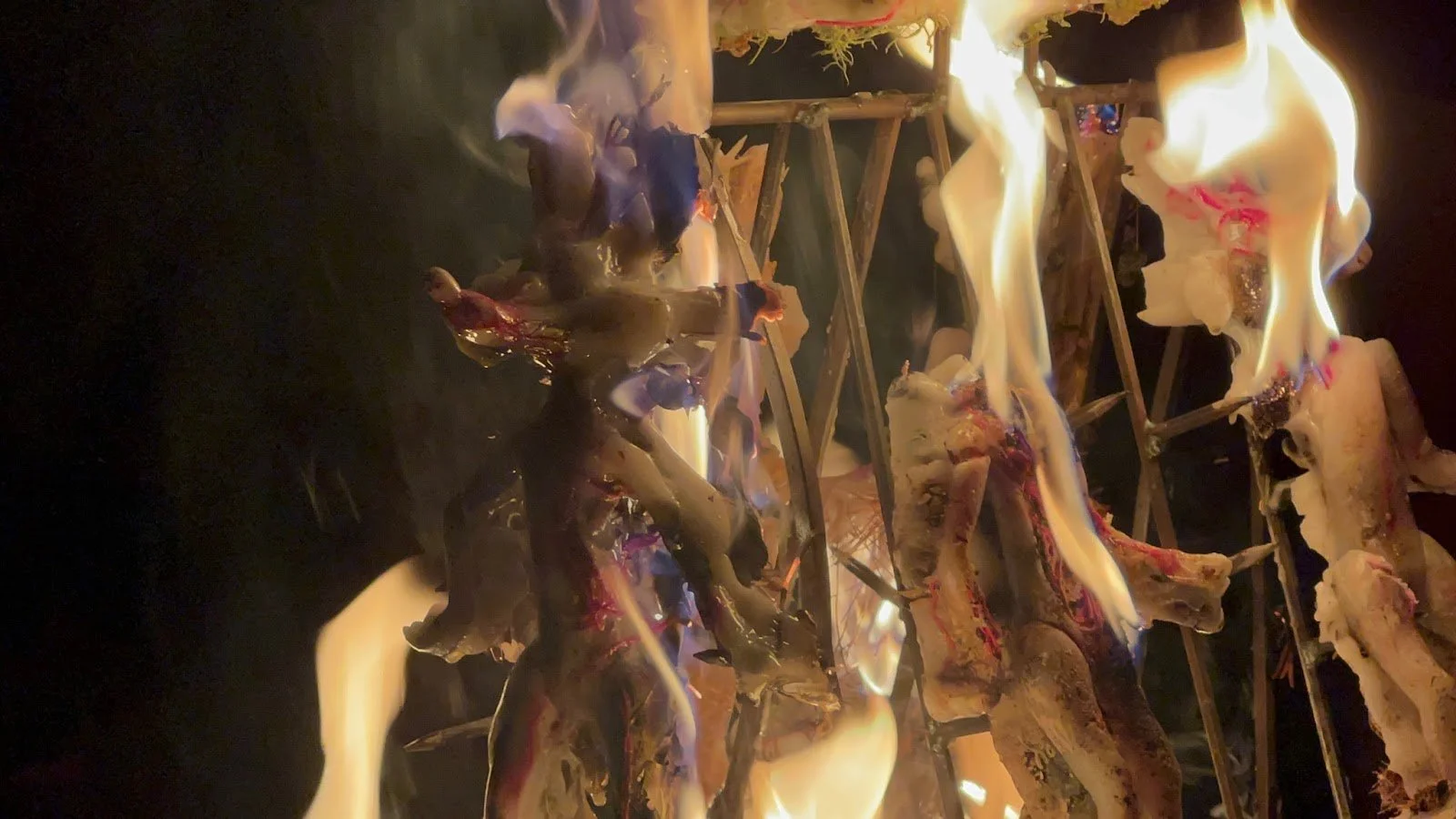innocence is cheap, but ten dollars lasts forever
Anoushé Shojae-Chaghorvand
GALLERY III
Anoushé Shojae-Chaghorvand, Dedication of manic energy, 2022, wax, fuse, lichen, pine needles, hemlock, dirt, charcoal, and steel.
March 18–April 16, 2023
Opening reception: Saturday, March 18 from 6–8pm
A.I.R. Gallery is pleased to announce innocence is cheap, but ten dollars lasts forever, an exhibition of sculptures by 2022–2023 Fellow Anoushé Shojae-Chaghorvand. This is Shojae-Chaghorvand’s first solo exhibition in New York City.
“A coyote in Piscataway, New Jersey bites two university students’ legs while they are walking to the parking lot after class, close to dusk. The school community believes the coyote is rabid, but it is actually upset—the coyote has lost its home to an international shipping warehouse. A campus police officer shoots the coyote six times at 1 a.m. The officer has a hard time explaining why he shot the coyote so many times.
Could this be what we seek at a child’s casino run by a giant rat?
Animator Chuck Jones flattened the coyote into Wile E., transforming the animal’s instinct for self-preservation into a cartoonish desire for conquest. Jones drew inspiration for the character from Mark Twain’s 1872 book Roughing It, where Twain describes the coyote as “a living, breathing allegory of Want. He is always hungry … He is always poor, out of luck and friendless.” Wile E.’s pursuit of the Roadrunner echoes our pursuit of him: we watch the endless comedic violence inflicted on Wile E. like a mechanical loop in an amusement park carousel.
Disneyland opened in 1955 after the devastation of World War II. One year later, the attraction “Burning Settlers Cabin” was added to Tom Sawyer Island. A small cabin, shrouded in greenery, was set afire by a constantly burning flame. A settler laid downstage on the ground, pierced through the chest by an arrow. After four decades, the fire was extinguished because the attraction failed to meet California’s emission standards. The cabin was rebuilt, quaintly outfitted with a plastic horse and a settler who now appears to be thriving in this simulation of westward expansion.
Unable to secure employment with Disney in the early 1970s, engineer Nolan Bushnell developed the idea for a pizza parlor that could bring animatronic attractions to suburban families throughout the country. Is this what Judge Doom meant in Who Framed Roger Rabbit—the advent of the highway bringing “toons” out of Toontown? The intended mascot for Bushnell’s franchise was a coyote, but by accident, he received a costume for a rat instead. And so Chuck E. Cheese was born.
When Chuck. E Cheese expanded beyond California, it acquired the competitor ShowBiz Pizza, complete with the franchise’s inventory of animatronics. The Showbiz Pizza animatronics were skinned and replaced with the skins of Chuck E. and the gang, who entertained guests from an elevated stage for some thirty-odd years. But the gang recently disbanded, their stage thrown away for a dance floor with a human inside a Chuck E. suit, meant to attract a new generation of adults and children to the faltering franchise.
I'm looking at the man in the mirror—the man inside the machine, inside the animal skin, and on the stage. What would your coyote be stuffed with?”
—Anoushé Shojae-Chaghorvand
Anoushé Shojae-Chaghorvand rolls in the soot of that barren stretch between life and death, where other fanatical tricksters endlessly scheme and spectacularly fail. Her kinetic monstrosities animate a series of choked gasps toward earthly experience, cyclically returning from what seemed to be a most certain death. In this exhibition, she deploys the coyote—resilient, displaced, pack mammal—as her skeletal muse.
Intervening on the physics of colonial capture, the coyote acts as the disruptor of stillness. Shojae-Chaghorvand takes this narrative construction of winners and losers and pans away from the victors, centering the frame instead on the subjects we vilify. The ticking time bomb, the sinking ship, the desperation and adaptability of liminal creatures. Her gesture here is the depiction and dissection of an anthropomorphized animal’s endless, cartoonish hunger and suffering—the tethers that jerk around desire and pain. The absent laugh track looms in unheard echo, fire is the operation waiting to be set into motion.
—lexi welch
This project was supported, in part, by a Foundation for Contemporary Arts Emergency Grant.
Anoushé Shojae-Chaghorvand is a New Jersey-based transdisciplinary artist who works primarily in kinetic sculpture. She creates spatial cinema—time-based looping high-tension scenes—in the form of performative installations that capture the complexity, violence, and absurdity of our American Dream. She is interested in the escapist tactics of amusement in Western culture, and how these tactics are rooted in tragedy and failure. Shojae-Chaghorvand received her BFA from Maine College of Art in 2019, her MFA from Rutgers Mason Gross School of the Arts in 2022, and attended Skowhegan School of Painting and Sculpture in 2022. https://www.anoushe.info/
View the Press Release here.
View Anoushé Shojae-Chaghorvand’s page here.
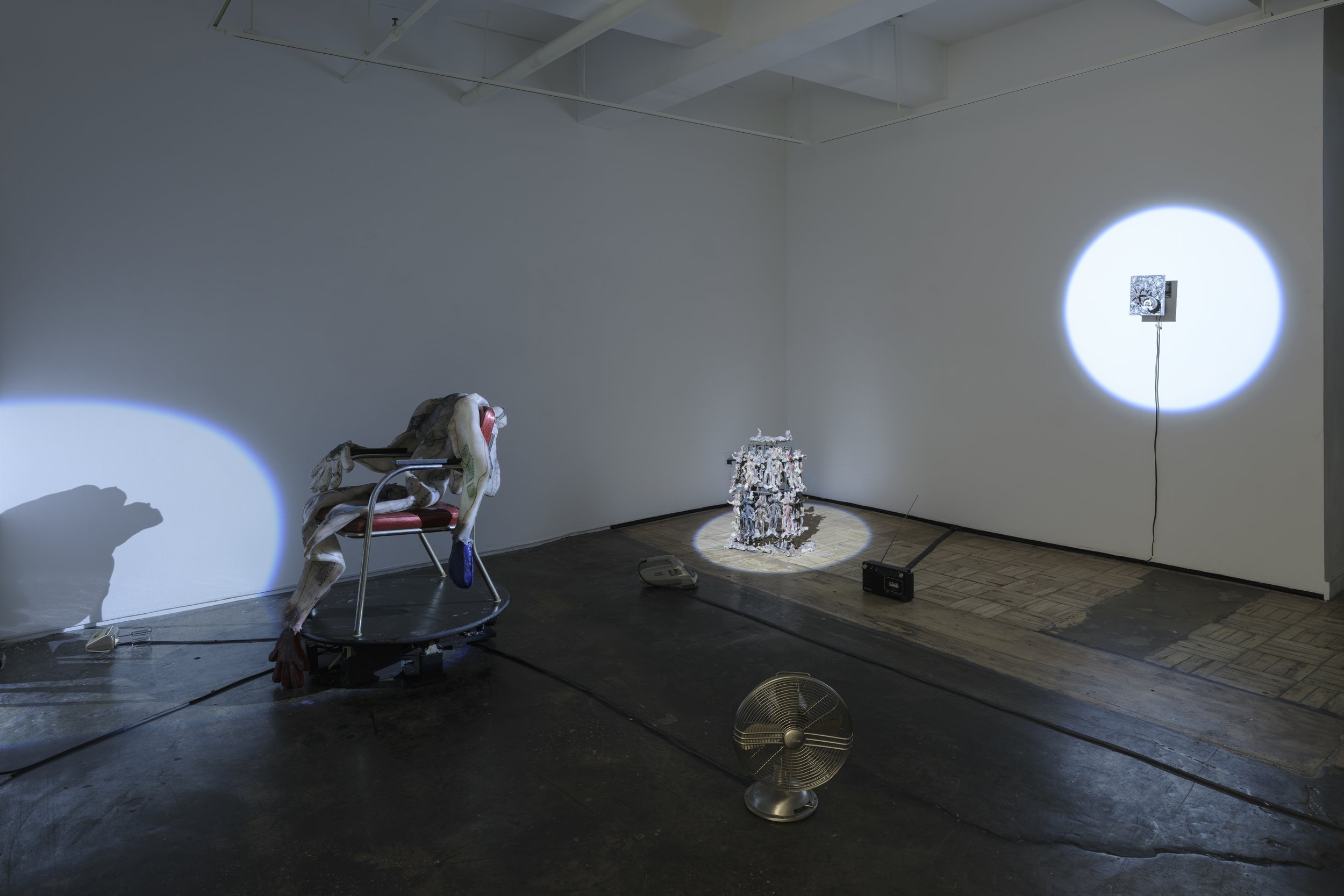
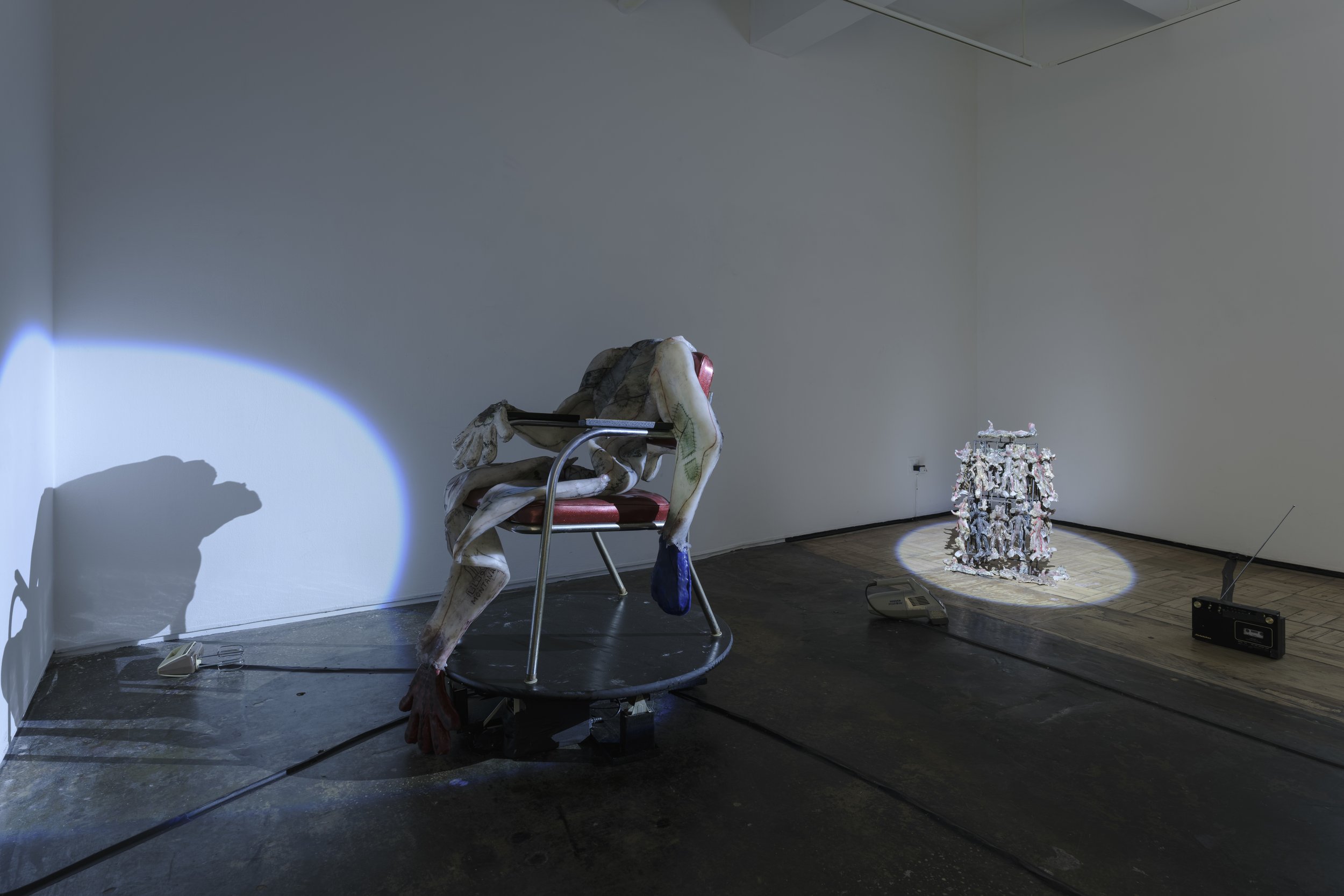
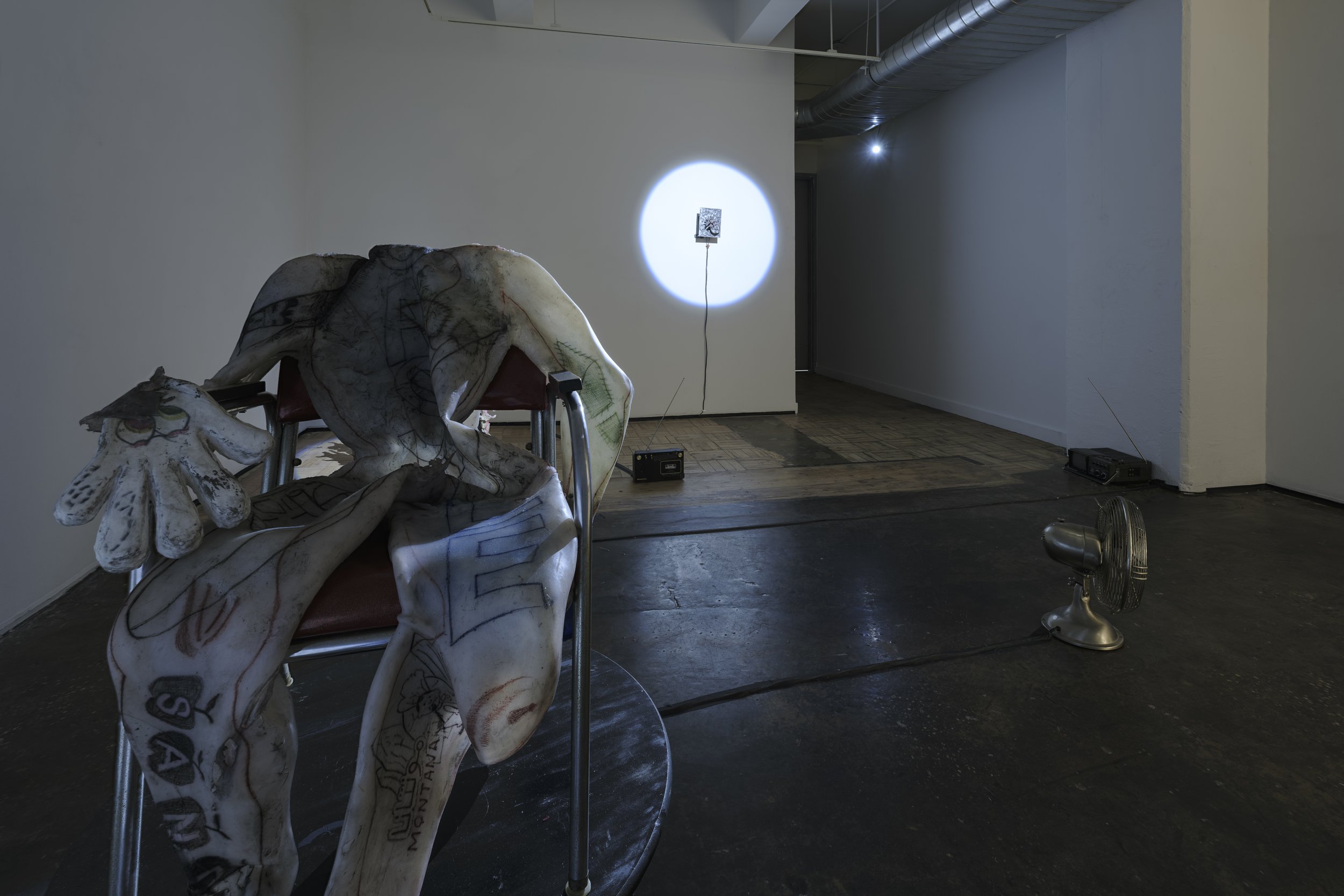
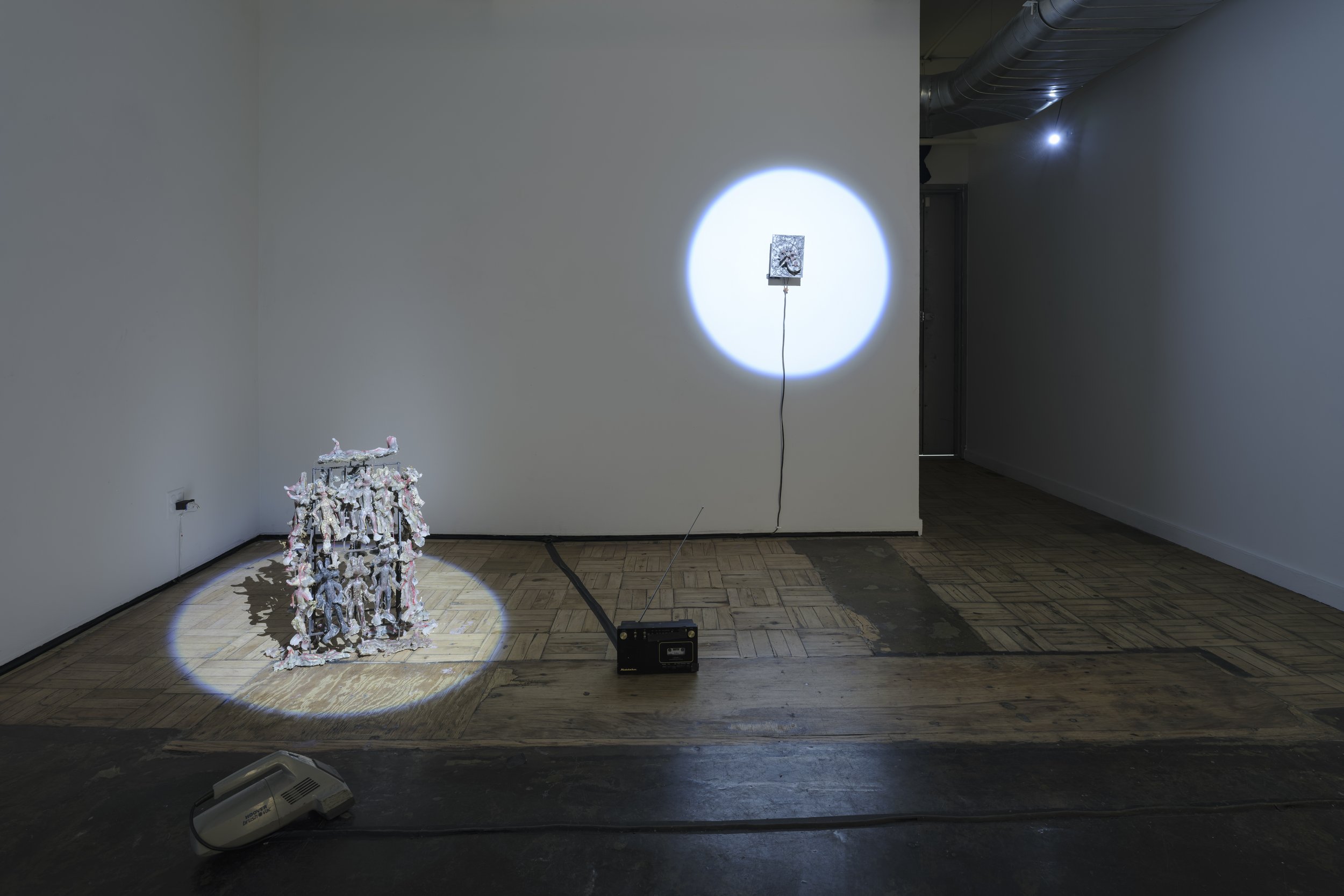
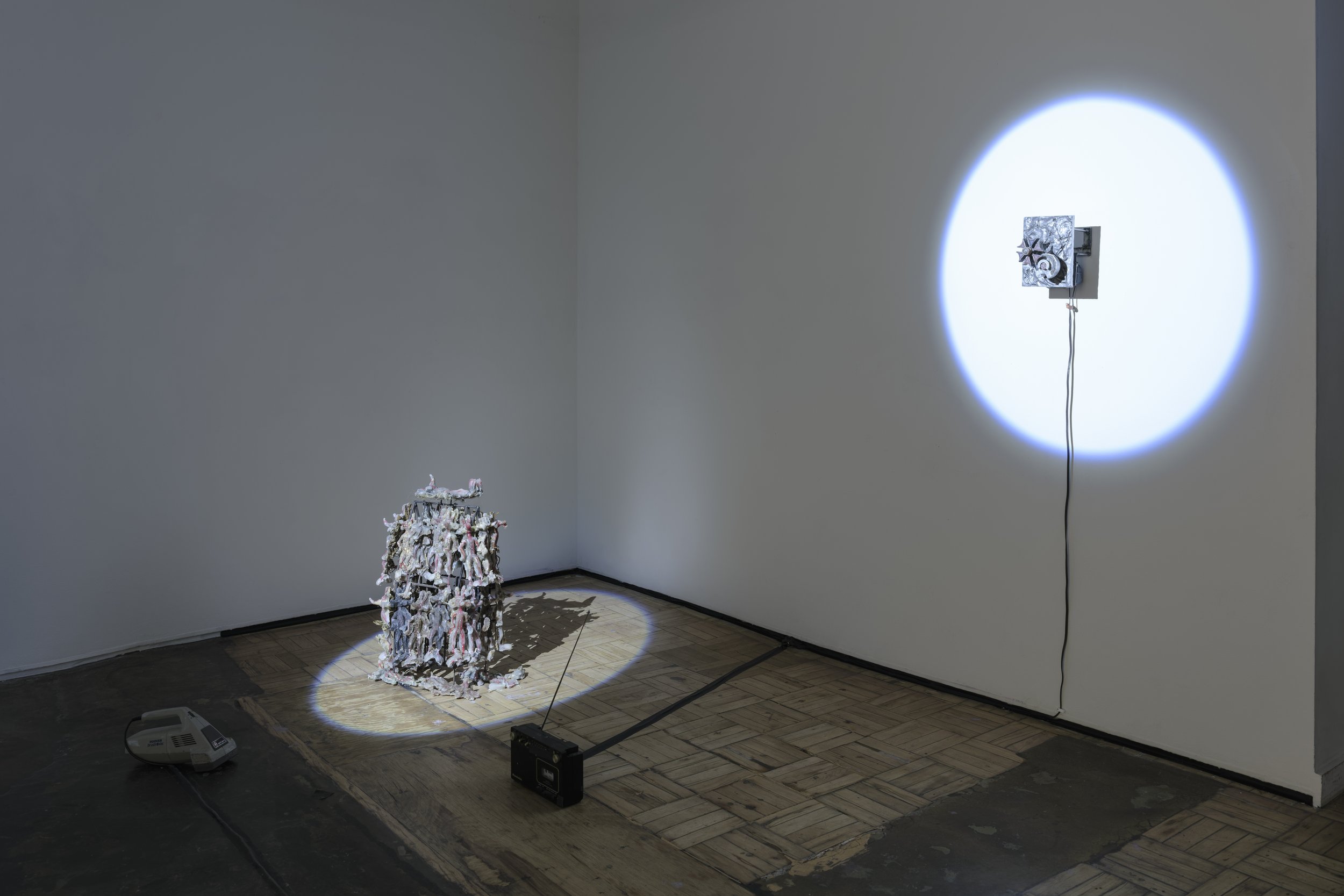
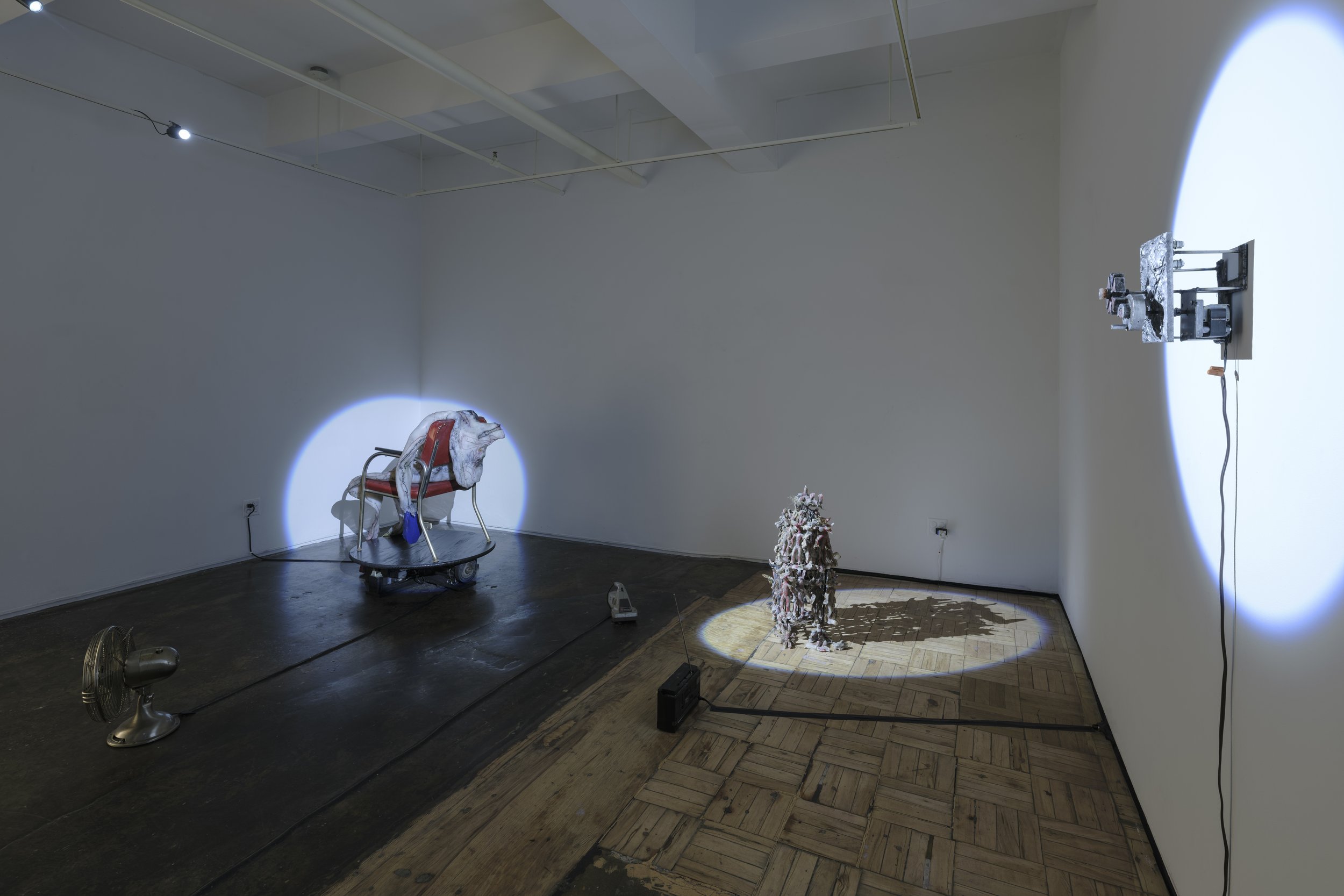
Photography: Sebastian Bach

